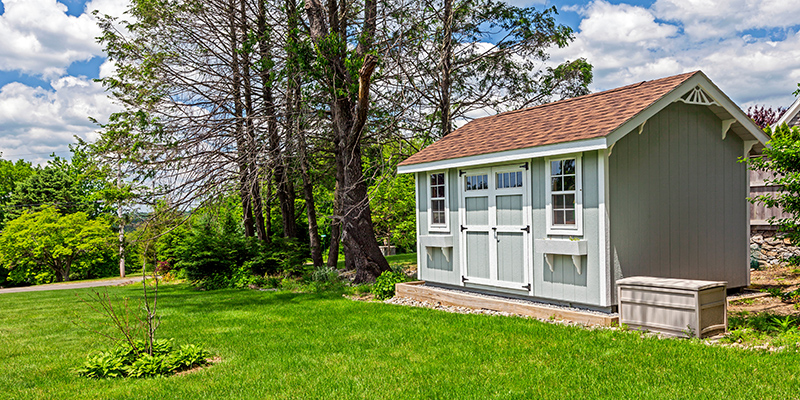Ways to Improve Indoor Air Quality

The quality of the air around us can directly impact our health, even though we don’t always recognize it. The presence of various pollutants in the air we breathe are often invisible to the naked eye, which makes it difficult to be alert to any potential threats. The best way to ensure that you’re breathing the best air possible is to recognize potential sources of pollution and alleviate them. Below are some some things to be conscious of and ways to counteract them.
Browse By Category
Sign up for Our Newsletter
The quality of the air around us can directly impact our health, even though we don’t always recognize it. The presence of various pollutants in the air we breathe are often invisible to the naked eye, which makes it difficult to be alert to any potential threats. The best way to ensure that you’re breathing the best air possible is to recognize potential sources of pollution and alleviate them. Below are some some things to be conscious of and ways to counteract them.
Be aware of the hazards present in buildings
Toxic materials were frequently used in construction projects before their health risks were fully understood, and these materials may still be present in older homes and buildings today. Both lead and asbestos are examples of toxins that were widely used in the home. The mineral asbestos was widely used because of its resistance to fire and high durability. It was included in a multitude of building products such as insulation, shingles, cement, and caulk, and can still be found in modern products. Lead was most often used in paint and pipes that are still part of our infrastructure today.
The risks associated with both lead and asbestos come into play when they are broken down into small particles that can be easily inhaled. Asbestos fibers, for example, can become airborne if materials containing asbestos are disturbed, like during a renovation or any construction. Once the fibers are inside the body, they can cause lung cancer, asbestosis, or mesothelioma. Though mesothelioma is rare with only about 3,000 new cases each year, it’s almost 100% preventable. It’s a rather aggressive cancer that often isn’t found until it’s developed into a later stage, and patients typically receive a poor prognosis, which makes prevention vital.
The health consequences of lead exposure are even more varied, and include stunted growth, hearing problems, premature birth, and reduced IQ. Lead is classified as a neurotoxin and is most dangerous for children, pregnant women, and seniors. Lead is often thought to mostly affect health when it’s ingested, like when lead on the water pipes in Flint, Michigan leached into the water supply. But, lead can be just as dangerous for our air quality. The most common example is when dried lead paint crumbles and turns into a dust that easily mixes into the air.
While it’s extremely important to remove these materials to protect your health, under no circumstances should you attempt to do so on your own. The health risks associated with exposure to these hazards are severe, which is why professionals with proper training are required to dispose of these materials safely.
In order to determine the potential risk of the presence of these toxins, you should consider the age of the building and any information you can find about how it was built and what materials were used. If you have reason to suspect that toxins might be present, limit access to any concerning areas of the home and schedule an inspection to determine if any action is needed to remove the risk.
Manage humidity and improve circulation
Excess moisture in the air and high temperatures can encourage the growth of mold. Mold commonly grows in basements and bathrooms, but can be found in any area without proper circulation. Black mold is a known health risk because it can release spores into the air that can impair the respiratory system. Once you discover mold, it’s important to remove it safely with methods such as covering your nose and mouth with a mask and wearing gloves.
Preventing future incidences of mold growth is essential to maintaining healthy indoor air, as well. Turning on a fan in the bathroom, especially while running the shower, can keep moisture from settling and potentially becoming moldy. Dehumidifiers can also remove moisture from the air, and can be used in specific rooms on an as needed basis.
Increasing ventilation can also help prevent instances of these toxins and improve air quality. This can be as simple as opening doors and windows to directly allow outside air into a building, or can be achieved through building renovations. Bringing in outdoor air can help dilute any pollutants present inside and is actually recommended by the Environmental Protection Agency. Of course, this is especially important for any short-term activities that release high levels of pollutants, namely painting, cooking, or construction related projects. However, if you’re concerned about toxins in the home, opening windows regularly could be a valuable practice. You must be aware of these instances especially if you have a family member in aged care melbourne.
Use plants to filter chemicals from the air
Introducing plants can be a great, simple way to reduce indoor air pollution! Several years ago, NASA conducted a Clean Air Study and found that plants are able to absorb and process particulates beyond just carbon dioxide. Some kinds of plants are even able to remove known carcinogens including benzene, formaldehyde, and volatile organic compounds. Some beneficial plants that grow well indoors are mums, spider plants, and boston ferns.
Though many of us immediately think of mechanical filtration systems to filter particulates from the air, they carry additional costs in terms of purchase price and electricity consumption. Using plants offers a more natural and affordable way to improve air quality, and even provides additional benefits of beautifying the building and elevating the moods of occupants.
For more information about the best types of plants for your space, click here.
The first step to improving our air quality is simple: pay attention to the spaces you inhabit! Noting potential sources of pollution at home and in the workplace and taking some of these steps to reduce them can potentially prevent serious health concerns down the road. Take a look at the buildings in your life and get started on improving the air you breathe today!
Trending Now
Related Article
Sign up for Our Monthly Newsletter
Sign up below for monthly updates on all HOA Resource

















